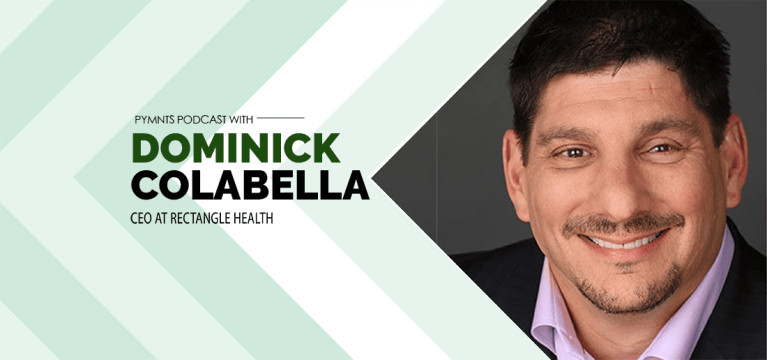
The healthcare industry continues to be on high alert and many hospitals are operating increasingly close to maximum capacity. Elective procedures typically handled at the hospital have not returned to pre-pandemic levels, and healthcare organizations continue to feel the effects and incur losses from the reduced volume.
“I think the most [financially] at risk are those large conglomerates, those large hospital systems,” said Dominick Colabella, CEO of Rectangle Health in a recent chat with PYMNTS’ Karen Webster. “Because they rely so much on the federal government, Medicare, Medicaid and insurance companies — and if they’re not getting those other payments, they are in dire straits.”
Because many states and systems have restricted elective procedures during the pandemic, and many consumers have also chosen to defer their treatment plans, these high-margin elective procedures have stalled.
“The very risky situation is the elective procedures at hospitals, and it’s not because they can’t safely do them,” Colabella said. “They don’t have the space to do the elective procedures, and that’s where a lot of the risk comes into the financial wellbeing of the hospital systems, and that’s something they’re monitoring very closely.”
That said, even through the winter surge and rise in COVID-19 cases, Colabella said practices are still open, and have learned how to operate safely under these circumstances.
Challenges To Overcome For The Healthcare Industry
In calculating the impact of the deferral of elective procedures and the attendant costs of dealing with COVID-19, the American Hospital Association estimates it was a $50 billion-per-month hit from March to June of last year.
“I think that’s actually a conservative estimate,” Colabella said, predicting that hospitals and healthcare organizations will continue to feel the effects and incur the losses from the continued reduced volumes into 2021.
Colabella added that the crisis continues to add significant tension to the already physically stressed personnel and financially burdened system. More government funds will be needed — but there are also care limitations that go beyond just elective procedures or those that can be handled by telemedicine.
“Virtual [appointments] are great, but at a certain point, you can’t have your hip operated on unless you have the X-rays, the MRIs and the physical assessment from that physician,” he said. “We saw in the middle of last summer, when cases were at the lowest, that people were still afraid to go to the emergency room, still afraid to go for X-rays, still afraid to go for MRIs.”
While this scenario is obviously bad for patients, it is also bad for practices — and is something Rectangle Health tries to minimize via facilitating a smoother payment process.
Payment Options Yield Better Experiences
When it comes to having modern payments technology and delivering better patient care and experience, Colabella said, they are directly related.
An improved, safer payment experience involves a shift from the norm of capturing payments at point-of-care to a new emphasis on payments captured pre-care, with a secure card on file and payment plans that are set up ahead of appointments. This shift makes for a better experience for the patient, as well as a better financial outcome for the practice. Colabella says: “They want to get paid ahead and they want to make sure that everything is handled so that they can go right into care and not have to focus on managing the payment side of it. COVID has given us a reset to ensure that payment is part of healthcare.”
Just as patients find hassle in giving their insurance information every time they show up to the same practitioner, he said, most patients want a more streamlined payment process. “There’s no difference between pulling out the insurance card and pulling out your Visa,” Colabella noted. “You want to have a seamless interaction. You want to walk in, get your care in a safe, secure manner, and leave knowing that the payment is just happening.”
Whether it’s a cashless, touchless transaction in an Uber or using their card on file to make a purchase on Amazon, Colabella said, “consumers get it” and are fully comfortable with — and expecting — these types of digital transactions.
Solving for financial responsibility brings peace of mind to the practitioner. “It’s having that card on file, having the payment plan, having the recurring [payment method] and not having to worry about it,” he said. “You want it to be a foregone conclusion that you’re getting paid and you want the days in (accounts receivable) to be zero.”
The Path Forward For Patient Payments
Colabella said that while certain pockets of the healthcare industry have used payment plans for years, such as pre-payment for cosmetic procedures or installment plans for braces, the healthcare industry at large has focused on receiving payment at the time of care. While payment plans have always been available to help patients afford their care, and now, more than ever, patients need options to finance their healthcare. Healthcare systems that have implemented automatic payment technology out of necessity have discovered that previously manual and cumbersome processes are now seamless, and offer additional efficient, consumer-like ways to pay such as text or via digital wallets.
Many healthcare systems that implemented new, contactless payment methods will choose to maintain this technology. Colabella predicts that “providers are going to communicate contactless methods and structure their billing to work with the patient’s ability to pay and in their preferred method. The necessity of contactless [technology] has reset the bar due to its tremendous convenience factor.” Remaining contactless is a preference that is likely to stay, and the environment has adapted, he said. “Same thing with Uber, same thing with Amazon — you’re never pulling out your credit card in those transactions. And healthcare is finally realizing, ‘hey, we can do this.’ ” Thus, healthcare no longer has to be the exception for safe, secure and convenient payments.